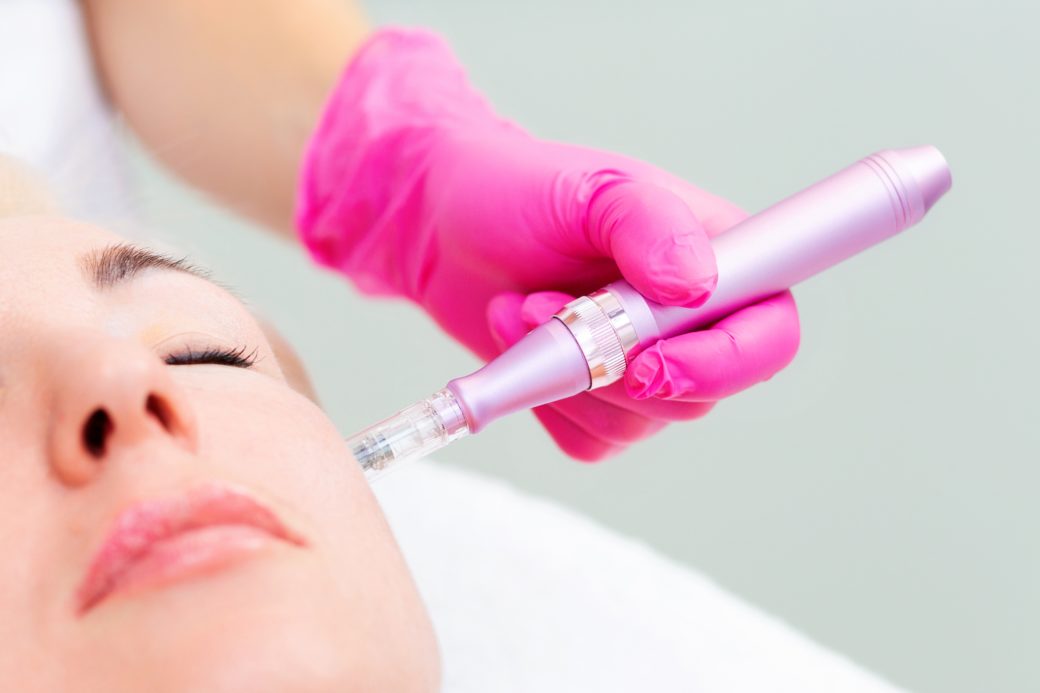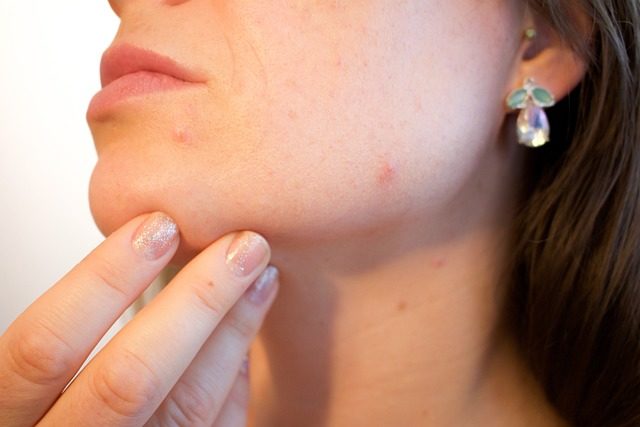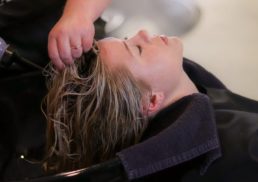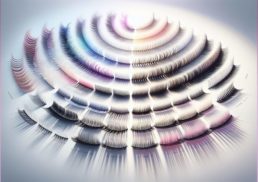Are you looking to improve the appearance of your skin and diminish the signs of aging, acne scars, or stretch marks? Microneedling might be the answer you’re searching for! In this blog post, we’ll explore the benefits of microneedling, how it works, and what to expect during the procedure. You’ll discover why this minimally invasive treatment has gained popularity for its ability to rejuvenate the skin and provide noticeable results.
Table of Contents
Short Summary
Microneedling is a minimally invasive skin treatment that stimulates collagen production, offering effective solutions for various skin concerns.
The procedure involves preparation, the treatment process and aftercare with a 5 day recovery time.
Professional microneedling treatments provide greater dermal remodeling benefits than at-home derma rollers and potential side effects include temporary redness, swelling or infection.
Understanding Microneedling

Microneedling, also known as collagen induction therapy or percutaneous collagen induction therapy, is a minimally invasive skin treatment that has evolved significantly since its development in 1995. With applications ranging from treating acne scarring to alopecia on the scalp, microneedling offers an effective solution to various skin concerns.
At the core of its success lies the stimulation of collagen production, a crucial component for maintaining skin elasticity, firmness, and overall health.
What is Microneedling?
Microneedling is a procedure that involves using a handheld device with tiny needles to create controlled skin injuries, triggering the skin’s natural healing process. The objective of microneedling is to stimulate the skin’s recovery process, resulting in the generation of additional collagen and elastin, which help maintain the skin’s firmness and suppleness. This treatment is typically performed on the face but can also be administered on other parts of the body where there is damaged or aging skin.
To achieve the desired results, it is recommended to receive three to five treatments on a monthly or biweekly basis. A standard dermaroller produces 16 micropunctures in the stratum corneum per square cm, and when using a 1.5 mm dermaroller, it is recommended to maintain a gap of at least 3 weeks between two procedures.
How Microneedling Works
The microneedling procedure encourages the production of collagen and elastin, resulting in skin rejuvenation and improved appearance. This is achieved by combining microneedling with radiofrequency technology to create thermal zones in the dermal structural components and accessory glands without affecting the epidermis. Additionally, platelet rich plasma can be used in conjunction with this treatment to further enhance its effectiveness.
The Dermafrac technique is a type of microneedling. It uses smaller drums, with needle sizes of approximately 0.5 mm, which makes it more suitable for use around the periocular skin. This innovative approach offers a promising alternative to traditional microneedling methods.
The Role of Collagen Production
Collagen production is essential for preserving skin elasticity, firmness, and overall health. By creating microscopic punctures in the skin, microneedling stimulates the production of collagen and elastin, which contribute to the skin’s structural support and repair of environmental damage.
Microneedling is a safe and effective treatment that can be used to reduce the appearance of the skin.
The Benefits of Microneedling
Microneedling offers a myriad of benefits for various skin concerns, including treating acne scars, addressing stretch marks and surgical scars, enhancing skin tone and texture, and being suitable for darker skin tones.
Let’s delve deeper into each of these benefits and learn how microneedling can help transform your skin.
Treating Acne Scars

Microneedling has demonstrated its effectiveness in reducing various types of acne scars, including atrophic acne scars. By promoting collagen production, microneedling helps to treat acne scars by filling in the indentations left by acne, resulting in smoother skin. It’s important to note that the number of sessions necessary depends on the intensity of the scars, and a needle length of 1.5-2mm is generally used for treating acne scars.
While microneedling is effective in treating post-acne atrophic scars, it has also been found to reduce sebum production and hyperproliferation of keratinocytes in acne vulgaris. This demonstrates that microneedling can not only improve the appearance of existing acne scars, but also help prevent new scars from forming.
Learn more, visit 10 Amazing Benefits of Microneedling.
Addressing Stretch Marks and Surgical Scars
Microneedling can help minimize the appearance of stretch marks and surgical scars by promoting collagen production, which fills in the depressions left by these scars. This treatment not only improves the appearance of the skin, but also enhances its overall texture.
The number of treatments required for scar reduction varies, but it’s typically advised to receive a series of 3 to 6 treatments, with each session spaced several weeks apart. By adhering to this treatment plan, you can expect to see significant improvements in the appearance of your stretch marks and surgical scars.
Enhancing Skin Tone and Texture
Microneedling stimulates collagen production, which reduces the visibility of wrinkles, hyperpigmentation, and pores, thus improving skin tone and texture. This treatment is particularly beneficial for those who are looking to improve their skin’s overall appearance without undergoing more invasive procedures.
In addition to improving skin tone and skin texture, microneedling can also help tighten sagging skin and enhance the skin’s pigmentation. By promoting new collagen production, microneedling rejuvenates the skin, giving it a more youthful appearance.
Suitable for Darker Skin Tones
Microneedling is a safe and effective treatment for all skin tones, including darker skin tones. By taking into account the patient’s skin tone and healing history, microneedling can be safely performed with minimal risk of skin discoloration or other complications.
This makes microneedling an ideal treatment option for those with darker skin tones seeking to improve their skin’s appearance and address various skin concerns, including uneven skin tone.
Microneedling Procedure: What to Expect
The microneedling procedure involves several steps, including preparation, the treatment process, and aftercare, with a typical recovery time of 5 days. Let’s take a closer look at each part of the procedure, so you know exactly what to expect during this transformative skin treatment and the skin’s healing process.
Preparation for the procedure involves cleansing the skin and applying a topical anesthetic to reduce the swelling.
Preparing for Microneedling
Before your microneedling treatment, it’s essential to consult with a healthcare provider to discuss your skin concerns, goals, and any potential risks. They may recommend that you abstain from using topical retinoids, acids, and exfoliants for a certain period of time before the procedure to ensure the best results.
In addition to this, you may be advised to use vitamin A or C cream on your skin approximately one month before microneedling to initiate the process of collagen production. This preparation is critical to achieving the best possible outcome from your microneedling treatment.
The Microneedling Process
During the microneedling process, your skin will be cleansed and a topical numbing cream may be applied to minimize any discomfort. A handheld microneedling device is then used to create controlled skin injuries, stimulating the skin’s natural healing process and promoting collagen production. The procedure can last anywhere from 15 minutes to a few hours, depending on the area being treated.
It’s important to remember that microneedling should only be performed by a trained professional in a sterile environment to minimize the risk of infection or other complications. While at-home microneedling devices are available, they may not provide the same results as professional treatments.
Aftercare and Recovery
Proper aftercare and recovery are essential for optimal results following a microneedling procedure. You may experience temporary redness, swelling, and skin flaking, which can be alleviated with moisturizer. It’s also important to avoid sun exposure and tanning beds for at least 48 hours after the treatment, as your skin will be more sensitive during this time.
In addition to these precautions, you should follow any aftercare instructions provided by your doctor, which may include using a gentle, fragrance-free cleanser and avoiding strenuous activities for the first few days. By adhering to these guidelines, you can expect a smooth recovery and the best possible results from your microneedling treatment.
Microneedling vs. At-Home Derma Rollers
While at-home derma rollers may seem like a convenient and cost-effective alternative to professional microneedling treatments, they are not as effective in providing significant benefits for dermal remodeling. At-home derma rollers are limited to the outer layer of the skin, while professional microneedling treatments penetrate deeper layers and offer greater benefits.
It’s important to consult with a trained professional to determine the best course of action for your specific skin concerns. While at-home derma rollers may provide some benefits, they may not be suitable for all skin types or concerns and may not offer the same level of effectiveness as professional microneedling treatments.
Combining Microneedling with Other Treatments
Combining microneedling with other treatments, such as topical serums, chemical peels, or radiofrequency, can enhance its effectiveness and provide more comprehensive skin rejuvenation. These combination treatments can help address multiple skin concerns at once, providing a more holistic approach to skin care.
However, it’s crucial to consult with your healthcare provider before undergoing any combination treatments to understand the potential risks and ensure the best possible outcome for your skin. By working closely with a professional, you can develop a customized treatment plan that addresses your unique skin concerns and achieves your desired results.
Potential Side Effects and Risks
Microneedling, when performed correctly, is generally safe and well tolerated. However, there are potential side effects and risks to be aware of, including temporary redness, swelling, and skin flaking. These side effects are typically mild and subside within a few days of the treatment.
In addition to these short-term effects, there are potential long-term implications, such as infection, scarring, and alterations in skin pigmentation if the procedure is not conducted correctly. It’s essential to consult with a trained professional who can properly assess your skin concerns and provide the safest and most effective treatment plan for your needs.
Summary
In conclusion, microneedling is a minimally invasive, versatile treatment option for a variety of skin concerns, including acne scars, stretch marks, and uneven skin tone. By understanding the procedure, its benefits, and potential risks, you can make an informed decision about whether microneedling is the right choice for you. With proper care and guidance from a trained professional, you can achieve the skin rejuvenation results you desire and enjoy a more youthful, radiant complexion.
Frequently Asked Questions
Is microneedling really worth it?
Overall, microneedling appears to be a viable option for treating common skin issues such as scars and wrinkles, with many patients achieving positive results. Therefore, it can be said that microneedling is worth considering.
How long does micro needling last?
Microneedling results can sometimes be permanent, though usually they last between four to six months.
What does microneedling treatment do?
Microneedling is a minimally invasive procedure used to treat acne scars, wrinkles, dark spots, large pores, and other skin conditions that cause depressions in the skin. It works by stimulating the healing process, causing new collagen and skin tissue to be generated to fill in and smooth out wrinkles.
This treatment is often done on the face but can also be done on other parts of the body.
What is the typical recovery time for microneedling?
On average, it takes about 5 days to fully recover from microneedling.
How many microneedling treatments are recommended for optimal results?
It is recommended to receive three to five microneedling treatments on a monthly or biweekly basis for optimal results.
This schedule will help to ensure that the skin is receiving the necessary treatments to achieve the desired results.









